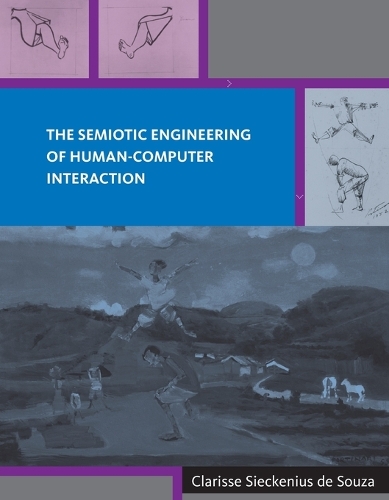
The Semiotic Engineering of Human-Computer Interaction
(Paperback)
Publishing Details
The Semiotic Engineering of Human-Computer Interaction
By (Author) Clarisse Sieckenius de Souza
Series edited by Bonnie A. Nardi
Series edited by Victor Kaptelinin
Series edited by Kirsten A. Foot
MIT Press Ltd
MIT Press
11th February 2005
United States
Classifications
Professional and Scholarly
Non Fiction
004.019
Physical Properties
Paperback
312
Width 178mm, Height 229mm, Spine 19mm
Description
A theory of HCI that uses concepts from semiotics and computer science to focus on the communication between designers and users during interaction.In The Semiotic Engineering of Human-Computer Interaction, Clarisse Sieckenius de Souza proposes an account of HCI that draws on concepts from semiotics and computer science to investigate the relationship between user and designer. Semiotics is the study of signs, and the essence of semiotic engineering is the communication between designers and users at interaction time; designers must somehow be present in the interface to tell users how to use the signs that make up a system or program. This approach, which builds on-but goes further than-the currently dominant user-centered approach, allows designers to communicate their overall vision and therefore helps users understand designs-rather than simply which icon to click. According to de Souza's account, both designers and users are interlocutors in an overall communication process that takes place through an interface of words, graphics, and behavior. Designers must tell users what they mean by the artifact they have created, and users must understand and respond to what they are being told. By coupling semiotic theory and engineering, de Souza's approach to HCI design encompasses the principles, the materials, the processes, and the possibilities for producing meaningful interactive computer system discourse and achieves a broader perspective than cognitive, ethnographic, or ergonomic approaches. De Souza begins with a theoretical overview and detailed exposition of the semiotic engineering account of HCI. She then shows how this approach can be applied specifically to HCI evaluation and design of online help systems, customization and end-user programming, and multiuser applications. Finally, she reflects on the potential and opportunities for research in semiotic engineering.
Author Bio
Clarisse Sieckenius de Souza is Associate Professor and Founder of the Semiotic Research Group, Department of Computer Science, at Pontificia Universidad Cat lica do Rio de Janeiro, Brazil.
